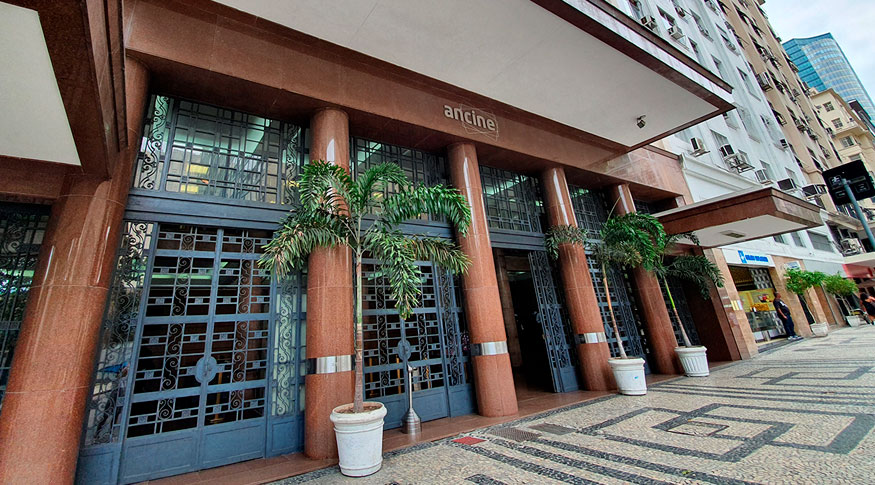System of Cultural Indicators
Budget for culture is reduced in all spheres of government in 2018
December 05, 2019 10h00 AM | Last Updated: December 11, 2019 12h25 PM

The public sector allocated R$ 9.1 billion for the culture sector in 2018, which is equivalent to 0.21% of the total consolidated expenses of the public administration. Despite the increase of expenditure, all government spheres reduced their costs participation in the cultural sector for seven year, with a change from 0.28% in 2011 to 0.21% last year.
Those data come from the System of Cultural Information and Indicators 2019, released today by the IBGE. The participation of the sector in expenses of the government against the overall budget fell from 0.08% in 2011 to 0.07% in 2018. State governments reduced that budget from 0.42% in 2011 to 0.28% in 2018, and municipalities from 1.12% in 2011 to 0.79% in 2018.
“Investments in culture have fallen due to the fiscal crisis, staff turnover and discontinuity of policies in the federal government. The budget is limited to costing," Leonardo Athias, manager of the survey, explains.
In 2011, R$ 7.1 billion were spent. That figure rose up to 013, and reached R$ 8.9 billion, having fallen between 2014 and 2016, to rise once more in 2017 and hit R$ 9.1 billion in 2018, yet below the inflation in that period. The federal government, which accounted for 19.2% of those expenses in 2011, increased its participation to 21.1% in 2018, whereas state governments reduced theirs from 32% in 2011 to 27.5% in 2018.
Municipal governments, which amounted to 48.8% in 2011, remained as the sphere of government that applied most of its budget in the cultural sector, expanding its participation to 51.4% in 2018. The biggest contribution of municipalities was due to the proximity with the population and its respective cultural demands, on the part of managers, producers and consumers of goods and services.
“The results show stagnation and decrease of investments with reduction of the importance of public expenditure in the three spheres. The decrease of investments, except for audiovisual ones, with increase in participation. Investments in culture in Brazil are still low and lost relevance against inflation. The IPCA increased 52% and costs increased by 28.6%. Patronage, a device created by the Culture Incentive Law, was stagnated at R$ 1.3 billion”, Mr. Athias says.
Rouanet Law
The costs comprise the management, operation and support from the institutions in charge of culture dissemination, preservation of the historic heritage, and promotion of the arts, as well as of data related to fundraising by cultural producers by means of tax incentive mechanisms (patronage).
The sources were the Integrated Financial Management System – SIAFI, the Accounting and Tax Information System of the Brazilian Public Sector – SICONFI and the Support System for Cultural Incentive Laws – SALIC. The last one analyzes the results of the of culture incentive mechanism created in 1991 by Law no. 8,313 (Rouanet Law).
The study shows that tax incentives for culture amounted to R$ 1.295 billion in 2018 – with R$ 1.272 billion from tax exemption (98.2%) and R$ 23 million (1.8%) effectively invested by the private sector -, which represents approximately only 13.9% of the total expenditure budget for culture in the three spheres of government.
The amount represents a decrease of 2.3% in relation to 2011, when a total of R$ 1.325 billion was recorded for the promotion of cultural projects, with R$ 1.225 billion from tax exemption (92.5%) and R$ 99 million (7.5%) effectively invested by the private sector.
“We have a tax exemption policy that is used to encourage cultural projects, whose positive side is to give independence for the economic agents. An aspect to criticize is that it is concentrated in the big enterprises”, says Athias.
The analysis of the number of incentive projects approved by Major Regions shows that the Southeast, despite still being the most representative one, reduced its participation in the period, from 65.4% in 2011 to 57.3% in 2018. The Northeast (from 8% to 6.8%) and Central West (from 3.8% to 2.8%) also showed decreases of incentive projects approved in the period.
In contrast, the South Region had a significant increase in the number of approved projects, going from 22.1% in 2011 to 33.4% in 2018. The North Region went from 0.7% in 2011 to 1.1% in 2018.
However, the analysis of amount collected with cultural projects by Major Regions shows a centralization of resources even higher in the Southeast, which represented 79.8% of the total collected in 2011 and decreased its participation to 77.3% in 2018, due to Rio de Janeiro. The South Region increased its participation from 11.4% in 2011 to 14.9% in 2018, while Northeast and Central West had small reductions.
Condecine sustains the audiovisual expansion
Regarding the exclusive total of costs with culture, at the federal sphere, in 2011, the National Institute of Historic and Artistic Heritage (Iphan), which has 15 regional superintendencies, was the institute with the highest share of costs with culture from the federal government. In relation to 2018, the National Film Agency (Acine), the institute responsible for funding the audiovisual sector, almost tripled its participation and was the most representative one, incorporating a third of the federal budget.
The explanation is in the creation, in 2001, of the Contribution to the Development of the National Film Industry (Condecine), a tax that started to be paid by telecommunications providers in 2011, boosting the investments in audiovisual activities.
The biggest drops in the federal costs were from the Ministry of Culture, which went from 23% to 15.7%; and the National Culture Fund (reduction from 8.9% to 1.3%). The federal government costs also includes the Brazilian Institute of Museums (increase from 8.4% to 9.7%), the National Arts Foundation (increase from 5.6% to 9.6%), the National Library Foundation (increase from 5.8% to 7.7%), Casa Rui Barbosa Foundation (increase from 2.5% to 7.7%) and Palmares Cultural Foundation (changing from 1.2% to 1.8%).
In the state sphere, states with representative costs in 2011, such as São Paulo (reduction from 36% in 2011 to 31.6% in 2018), Bahia (reduction from 8.6% in 2011 to 6.9% in 2018) and Rio de Janeiro (drop from 7% to 5.1%) reduced these expenses significantly in 2018. In contrast, Ceará (increase from 2% to 4.3%), Maranhão (increase from 2.6% to 4.6%) and Pará (increase from 3.1% to 4.4%) showed significant rises in their respective expenses, in absolute figures.
Among the Major Regions, Southeast was the most representative in terms of total costs with culture, despite the reduction in its participation from 50.9% in 2011 to 44.1% in 2018. Due to this drop in the Southeast Region, all the other regions had positive changes. The South Region, which had 7.4% in 2011 and increased to 7.6% in 2018, completed the period with the smallest share.
Among the municipalities, the costs were most representative in municipalities with a population over 100 thousand inhabitants, which account for 52.2% of the total costs with culture in 2018. On the other hand, municipalities with a population below 10 thousand inhabitants, despite showing an increase in participation in the period, represented only 9.1% of the total of the municipal costs with culture in the same year.


















